Thanjavur’s rich cultural legacy comes alive through the legendary Thanjavur paintings, also known as Tanjore paintings. Featuring iconic religious subjects adorned with precious stone and glittering gold leaves, Thanjavur artworks weave a tale of intricate craftsmanship and unwavering devotion, cementing the former capital of the Chola Empire as the ‘Cradle of Arts in South India’. The gold embellishments, the fundamental characteristic of Thanjavur paintings created on high reliefs using complex gesso techniques, offer a glimpse into the opulence of India’s rich artistic heritage.
The Thanjavur style of painting is created on a canvas attached to large wooden planks called palagai padam. Early themes depicted Hindu divinities as central subjects, with larger compositions showcasing secondary subjects in the background. The style has been influenced by various cultural and artistic movements throughout history, including Vijayanagara murals, Deccani paintings of Mysore and Tirupati, Maratha court paintings, and European techniques. As the style evolved, it became more diverse and personalized to meet patrons' demands and thus, the embellishments on these paintings evolved over a period of time as ornamentation, colored glass beads, and precious stones enhanced their charisma.
However, the unique element of Thanjavur paintings, the gold foil overlaid on the gesso work, has been largely constant. This is because the gold foil used liberally in Thanjavur paintings not only makes the work a splendid visual treat but importantly, protects and prolongs the life of Thanjavur paintings as the shine of pure 22-carat gold lasts years.

Snippet from the Materials lesson of MeMeraki's Tanjore Masterclass
Historically, gold has been valued for its scarcity, beauty, and versatility, making it valuable in many cultures. Gold, being a non-reactive metal, does not rust or tarnish. Thus, it is considered pure and highly regarded as auspicious. It has been associated with fire, serving as a symbol of purity, wealth, and prosperity, often represented by Lakshmi who is the goddess of prosperity. This precious metal is frequently incorporated into the fabric of saris and found adorning the ornate entrance towers of temples, known as gopurams. The gold in Thanjavur paintings has been utilized since the 2nd century BC. Since these paintings were religious, gold as a religious symbol of purity and sanctity instilled a feeling of devotion and opulence. In the Early Modern era, the use of gold signified wealth and status. During the Vijayanagara rule, the empire rich in gold deposits minted gold coins such as varahas, which were widely used for trade and commerce. Even during the Thanjavur Nayaks and Thanjavur Maratha rule, gold coins like gold fanam became an emblem of prosperity and power. Throughout Deccan history, the temple architecture has often been adorned with gold-plated sculptures and carvings. Thus, it is not surprising that gold found its way into the Thanjavur paintings.
For the gold embellishments, Thanjavur artisans use the gesso work technique to emboss selected areas of the artwork to cover them with gold foil. For the gold foil work, a gesso paste in a 2:1 ratio of chalk powder and gum is applied over the selected areas using a squeezing bottle or brush to create relief. Fine brushes are used for intricate details. Glue is applied to the gold foil and the selected areas like jewelry and dresses of Gods, borders, arches, and architecture for the elevated glittering texture.
But as the saying goes, all that glitters is not gold, especially in the world of Thanjavur paintings. After receiving a Geographical Indication Tag in 2007 and becoming a highly commercialized traditional craft, the authenticity of the glittering works has become increasingly difficult to discern, especially without damaging the artwork. Thanjavur paintings may not always live up to their glittering reputation, as no regulatory body guarantees the quality of the gold used.
However, a glimmer of hope emerged in 2018 with a breakthrough discovery by Dr Ramanathan Venkatnarayan and his team from SASTRA University in Thanjavur, Tamil Nadu, along with the Department of Chemistry at the Indian Institute of Technology (BHU) Varanasi. The team came to the sad realization that embezzlement had unfortunately become prevalent, despite the GI certification that provides security to the intellectual and creative property of craftspeople, enabling them to continue their work unhindered by outside competition. In this art sector, replacing gold foil with less expensive alternatives is a fundamental malpractice. Hence, the team saw the necessity to develop a non-destructive method to determine the presence of real gold. This would allow the formulation of standards and regulations while selling these paintings and would categorically exterminate the malpractice without damaging the artwork. By turning to Raman spectroscopy, Dr. Venakatnaryan and his team fused science and traditional art to uncover the true nature behind the glittering paintings - is the gold real or just a fake glimmer?

Snippet from MeMeraki's Tanjore Masterclass
Discovered by renowned Indian scientist CV Raman, Raman spectroscopy is a scientific technique used to identify and study the properties of molecules. It involves shining a laser at a sample and measuring the scattered light that comes back. The scattered light provides information about the chemical composition and structure of the sample.
One of the creative applications of Raman spectroscopy is in the non-destructive diagnostics of paintings. Raman spectroscopy has proven to be an effective technique in several European paintings, where it detects anatase (TiO2) nanoparticles to determine the age of the works. Scholars have also extensively studied dyes and pigments in cave paintings and medieval European artworks using this method. However, there is limited scientific material on the use of Raman spectroscopy to examine Indian artwork and painting. One of the most significant contributions in this regard is by research scientist Ravindran Ramamoorthy Thoguluva and his team who used Raman spectroscopy to analyze medieval miniature paintings belonging to the Mughals and Rajputs from the 17th century. The same group also investigated the rock-shelter murals at Bhimbetka, an internationally significant site in the Indian state of Madhya Pradesh.
But this changed in 2018, when researchers from SASTRA University in Thanjavur used Raman spectroscopy on 10 gold foils and 10 paintings that they had borrowed from local artisans in and around Thanjavur, and reported their findings in the groundbreaking paper published by the researchers in Spectrochimica Acta Part A: Molecular and Biomolecular Spectroscopy.
Of the 10 gold foils tested, only three turned out to be the real deal. In the case of paintings, only one or two out of 10 turned out to be genuine gold foil. The researchers reveal that laser light at a 532-nanometer wavelength used for exciting the foil does not get absorbed if the foil used is made of gold because the gold used in the foil is nanometer in size, and it absorbs the light. Thus, real gold has an extensive emission at a higher wavelength. Thanks to this non-destructive technique, the foil and artwork remained intact after testing.
Despite the researchers’ efforts, they could not identify the composition of the material used to replace gold in the fake foils. As recorded by science journalist R. Prasad, Dr Venkatnaryan clarified that the absorption and emission properties of the counterfeit material are impossible to predict. But the chemistry scholar explained that “when the foil is not made of gold, in the Raman you would see some peaks if and only if the fake material is not a metal.”
Ultimately, the team applied energy-dispersive X-ray (EDX) analysis to validate the findings. While EDX is also commonly used to determine the compositions of materials like the authenticity of gold foil, Raman spectroscopy offers a non-destructive testing method, performed without removing the frame and glass of Thanjavur paintings.
Thanks to the intersection of science and traditional art, we now have a new way to ensure that glittering gold in Thanjavur paintings is truly as valuable as it appears. This discovery is significant as it offers a reliable and non-destructive method of determining the authenticity of Thanjavur paintings. It also highlights the need for better regulation in the handicraft of Thanjavur paintings, which are integral to India’s artistic legacy.













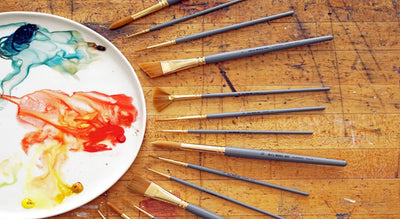

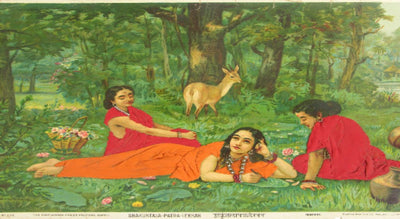
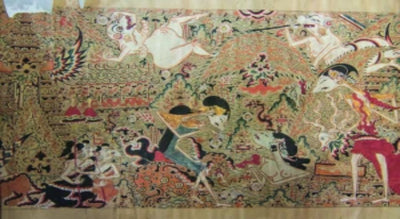
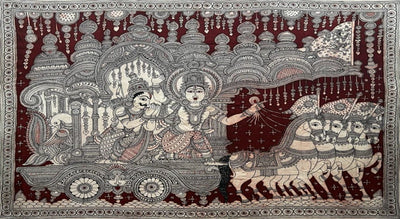

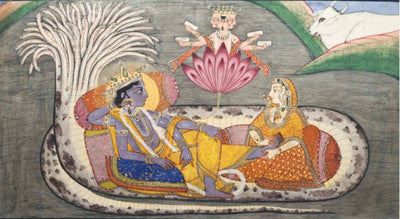

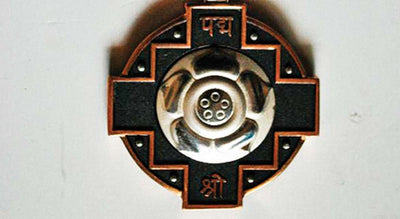

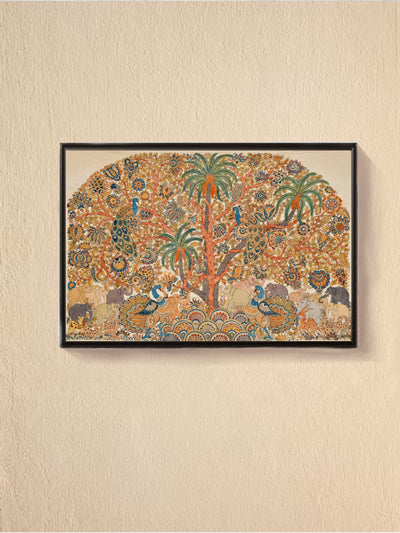







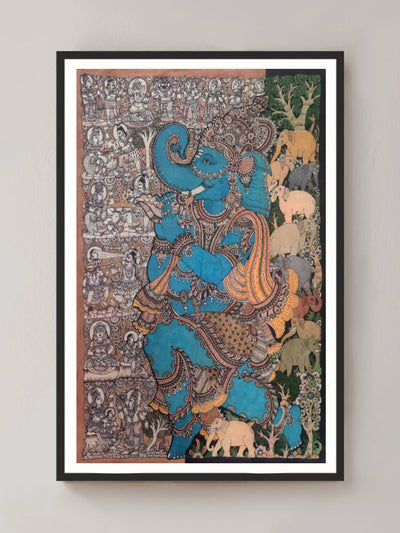








Very through information. I am doing diploma in fine arts so i am always in the lookout for such in depth articles. If anyone is interested in pursuing DFA: https://www.penkraft.in/DFA